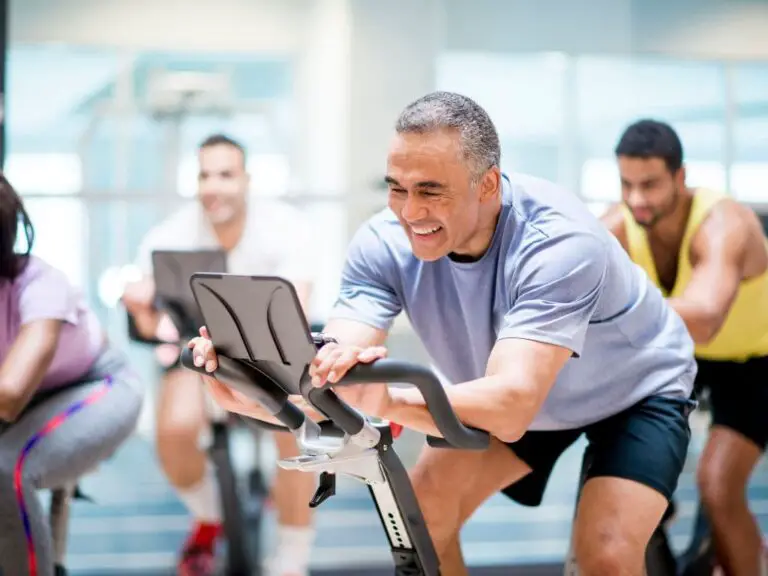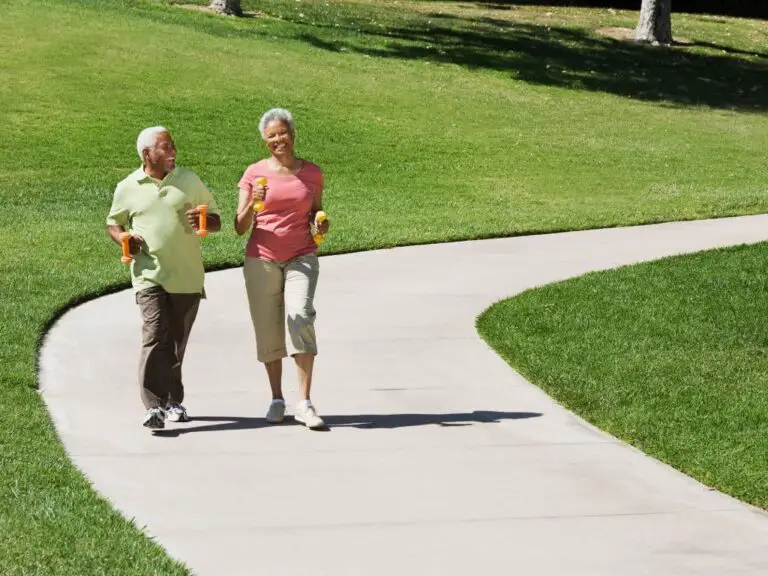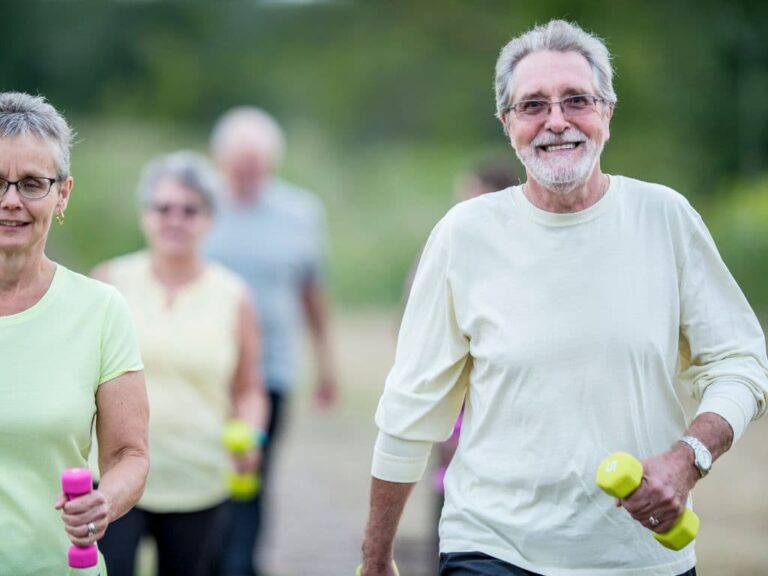Do Steps Around the House Count?
Getting enough physical activity each day is crucial for maintaining overall health and wellbeing. For many people, finding time to get to the gym or go for long outdoor walks can be challenging. This leads to the question – do steps around the house count as meaningful exercise?
Yes, steps around the house do count towards daily exercise goals. Walking indoors contributes to the recommended 10,000 steps per day, aiding in weight management, stress reduction, and cardiovascular health. The benefits are maximized by increasing walking intensity and incorporating strength exercises. Using a fitness tracker can help monitor progress and ensure adequate activity levels are reached.
To reap maximum rewards, you need to be strategic about how you incorporate indoor walking into your routine.

How Many Steps Do I Need to Take Around the House for Exercise?
Experts recommend getting at least 10,000 steps per day for optimal health. This number provides a general guideline for the amount of activity and movement needed to gain benefits like weight management, reduced stress levels, and improved cardiovascular health. Getting steps in around the house can be an easy way to contribute to your daily totals without much effort.
The number of steps required around a house to get meaningful exercise will depend on several factors. Larger houses with multiple floors will necessitate more walking between rooms and floors. Homes with more occupants will require more movement to carry out daily tasks. The types of activities being done around the house like cleaning, doing laundry, and preparing meals will also impact steps counts. Generally, focus on increasing movements throughout the day to hit step goals.
While indoor walking provides exercise, outdoor activities like jogging or hiking give more cardiovascular benefits. This is because outdoor walking often involves variable terrain and inclination while indoor surfaces are flat. However, weather conditions or safety concerns can make outdoor walking difficult. For moderate intensity, aim for at least 30 minutes of continuous indoor walking daily. Increase your pace and incorporate strength exercises to match outdoor workouts.
What Are the Health Benefits of Walking Around the House?
Indoor walking helps strengthen the heart muscle, lower blood pressure and cholesterol. The increased heart rate from walking around the house improves circulation, bringing oxygen and nutrients to tissues in the body. Regular indoor walking can help reduce risk of heart disease, stroke, and other cardiovascular issues. Gradually increase duration and intensity of home walking for best heart health.
Walking around your home can lower cortisol, the stress hormone. The repetitive motion produces relaxation while the increased heart rate releases endorphins, the “feel-good” neurotransmitters. Taking short indoor walking breaks can boost mood, reduce anxiety and symptoms of depression. This leads to lower perceived stress and healthier stress responses long-term.
Increasing steps around the house through regular short walks can give you more energy. Walking raises your heart rate, gets blood pumping, and increases oxygen circulation. This gives your cells and muscles more vitality. Expending energy through indoor activity also leads to better sleep. The combination of improved sleep and raised energy expenditiure increases overall energy levels.
How Can I Track My Steps Around the House?
Using a tool to track steps is crucial for getting enough indoor activity to meet daily exercise requirements. Pedometers or fitness trackers provide data to quantify your home walking and give you targets to aim for. Tracking indoor steps also helps identify low-activity times where you can incorporate more home-based movement.
Wearable devices like Fitbits accurately measure steps by using motion sensors. Meanwhile, pedometers are typically worn on the hip to gauge up and down movements associated with steps. For both devices, be sure to find well-fitted options and wear them securely. Then sync your tracker with an app to conveniently access your indoor step count data.
To get maximum benefits, focus on the intensity as well as number of indoor steps. Increase your walking pace around the home to raise your heart rate. Also incorporate full body movements like swinging arms and extending legs with each step. Engaging muscles throughout your body while walking intensifies the workout and burns more calories.
What Are Some Other Activities I Can Do Around the House to Get Exercise?
Pick up the pace by jogging or running around your home rather than just walking. Also try dancing to music as you move between rooms or do chores. Both running and dancing raise your heart rate more than walking for a more intense cardio workout. Just be careful of low ceilings, furniture, and clutter that could lead to injury.
Add bodyweight exercises like squats, push-ups and jumping jacks into your indoor routine to build strength. These can be done anywhere in the house for a quick intense burst of activity. Try doing 10-15 reps of each exercise back-to-back between tasks or during TV commercial breaks. Over time, increase reps to continually challenge yourself.
Yoga, Pilates and calisthenics are great ways to increase flexibility, balance, and get your heart pumping. Clear some space in a bedroom, living room or basement for these types of workouts. Use online videos or apps if you are new to these exercises. Home workouts combining walking with some yoga, pilates and calisthenics provide both cardio and strength benefits.
How Can I Make Walking Around the House More Interesting?
Make indoor walking more entertaining by listening to upbeat music or catching up on your favorite TV shows while strolling around the house. Having a lively phone conversation with a friend can also distract you from the monotony. Multitasking while walking makes the time pass quickly so you actually look forward to it.
Look for opportunities to incorporate deskercise and micro-movements as you go about your day. Simple exercises like shoulder rolls, wall push ups and chair squats add extra activity. Fidgeting, foot tapping, and pacing during long tasks like talking on the phone or watching TV also increase calorie burn.
Prevent indoor walking from becoming mundane by frequently changing your route around the house. Walk backwards or sideways to engage new muscles. Try interval training by alternating brisk walking with slower strolling. Use different rooms for varied exercises like squats in the kitchen and push-ups in the bedroom. Get the whole family involved to make indoor walking fun.
Conclusion
Walking around your home can absolutely provide meaningful exercise to improve your health when done regularly and with purpose. Track your steps, incorporate other activities like strength and flexibility exercises, and find ways to make indoor walking fun and interesting. With some strategy, home-based workouts can give you all the benefits of going to the gym or exercising outdoors. Consistency is key, so focus on building the habit of indoor walking and activity into your daily routine.
Frequently Asked Questions
-
Do steps around the house count?
Lavina says that listening to just a 30 minute podcast can help you get up to 3000 steps. Studies also show that listening to podcasts, which requires brainpower, can help with cognitive development.
-
Is 5000 steps a day good for a 70 year old?
According to a study in The International Journal of Behavioral Nutrition and Physical Activity, the daily step count for an average older person is between 2,000 and 9,000.
-
What vitamin Are you lacking when you feel dizzy?
Vitamin B12 deficiencies are easy to diagnose and treat. However, they can often be overlooked as a cause for dizziness. If you are experiencing dizziness, ask your doctor to perform a quick blood test. Vitamin B12 is found in meats, milk products and fortified cereals.
-
What is one fruit all seniors should eat?
To get enough Vitamin C, seniors should consume plenty of citrus fruits. Vitamin C has been shown to increase immunity, and aid in fighting infections. Vitamin C-rich foods include tomatoes, oranges, grapefruits, strawberries, bell peppers and tangerines.
-
What cheese is good for muscle building?
Swiss cheese, cheddar and mozzarella all have 78g/oz. This can increase muscle mass. A new study found that hard cheeses, such as Grana Padano and Swiss cheddar, can lower blood pressure. Ricotta, which is rich in whey protein, has the highest satiating proteins. Quality cheeses are the best.
-
Is yogurt good for building muscle?
6. Muscle mass building Greek yogurt and other protein-rich foods may be helpful in building muscle mass. A high-protein diet can increase muscle mass for those who do resistance training, according to research.
-
How many steps is a 45 minute walk?
Rob Arthur, CSCS says that it appears like there are about 4000-6000 steps. Walking at about 100 steps/minute, this equates to 40-60 minutes per day.
-
How many steps is a 20 minute walk?
An average 20-minute walk takes 120 steps per hour, which is 2,400 steps. This can be broken down into three 800-step walks.
-
What must elderly people not eat?
Salty foods and beverages should be limited. Don’t salt foods or drinks at the table. Avoid sugary drinks such as sugar-sweetened soft drink cordials and confectionery and fruit drinks. Limit alcohol
-
What happens when holding in a fart?
You can hold in a fart with your anal muscles by tightening them. This builds up gas in your stomach. This can lead to immediate discomfort, heartburn, and bloating.






